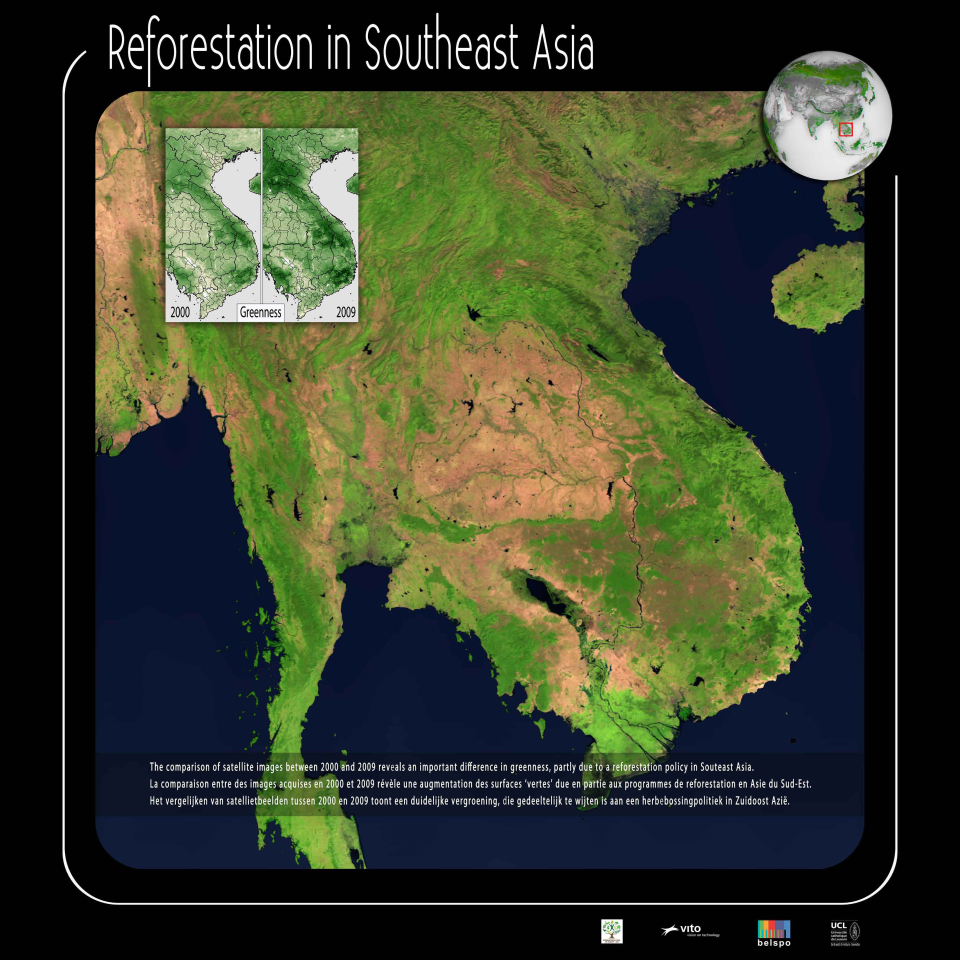This SPOT VEGETATION image shows the peninsula of Southeast Asia from Thailand to Vietnam. The image is not in true colours, it was produced from the values recorded in the mid-infrared, near infrared and red spectral bands. This combination allows to improve differentiation of the dense vegetation, which appears in green, and bare soil or sparsely vegetated surfaces, which appear in brown.
The small map shows the vegetation indices calculated for the years 2000 and 2009. The darker the green; the higher the indices. The increase in green areas is partly due to reforestation programmes undertaken in the region during the last 9 years.

The comparison of sattelite images between 2000 and 2009 reveals an important difference in greenness, partly due to a reforestation policy in Southern Asia.
In many countries in the tropical belt of the globe, forests are in transition. These forests, which until now were cut at a sometimes alarming rate, recently begun to regenerate.
Forests in transition are relatively complex landscapes with alternating patches of intact forest, clear cutting and forest patches in various stages of degradation and regeneration. These forests in transition, with their heterogeneous landscape, are of great importance to a number of ecological parameters, such as biodiversity, conservation of soil and water resources and carbon sequestration.
This process of forest transition takes place in response to two types of situations:
- when the economic development of a country creates enough employment in sectors beside agriculture. In this case farmers abandon their lands and fields, and leave them be, whereafter they are gradually recolonized by the forest;
- when governments or landowners decide to plant trees in abandoned fields. This can be encouraged by lack of certain forest resources or by international mechanisms for compensation under environmental legislation. An example of these mechanisms is the REDD (Reducing Emissions from Deforestation and forest degradation), which aims to encourage countries to preserve their rainforests. Its principle is to offer financial compensation to developing countries, that avoid or reduce deforestation, to cover the corresponding financial losses.
Recent research has shown that sometimes the regeneration of the forest in an area leads to deforestation elsewhere. It is therefore useful to observe the transitions at landscape scale, so as to demonstrate the potential negative effects of forest preservation, due to a higher pressure on other types of land use.
The changes in forest cover can be monitored using various types of remote sensing data. High-resolution data are used to detect changes in forest cover at the local level. Low-resolution time series data complement the analysis at the regional level. The same low-resolution data can be used to identify changes in productivity.